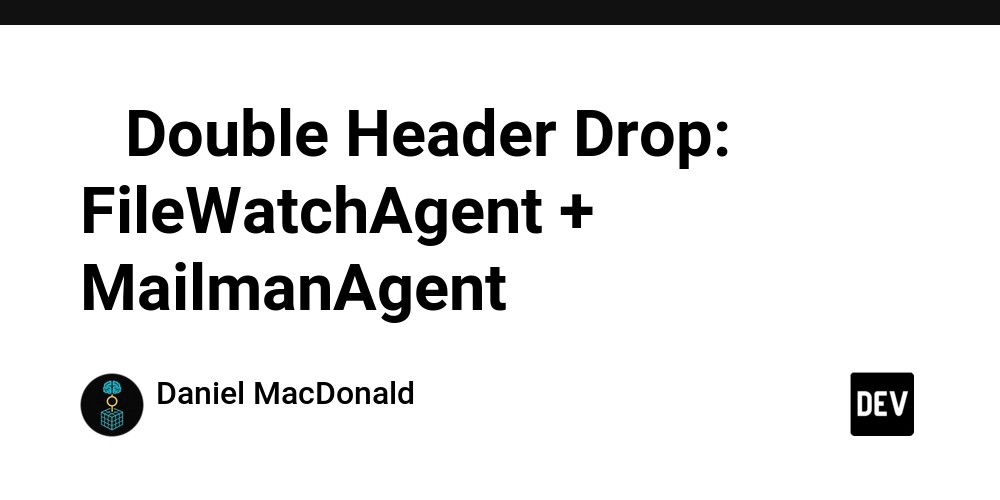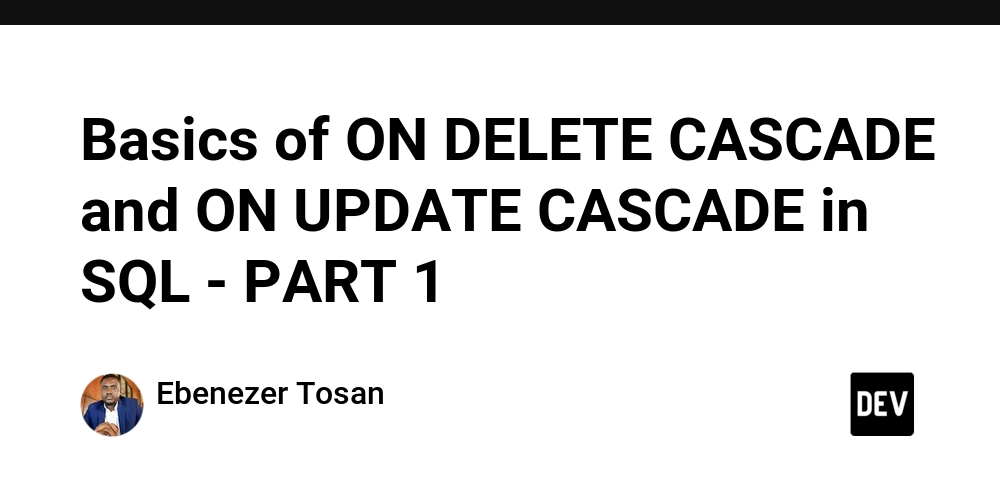7 Essential WebSocket Security Practices for Modern Web Applications
As a best-selling author, I invite you to explore my books on Amazon. Don't forget to follow me on Medium and show your support. Thank you! Your support means the world! WebSockets provide powerful real-time communication capabilities for modern web applications, but they also introduce unique security challenges. I've worked with WebSockets across numerous projects and found that implementing proper security measures is essential for protecting both your application and users. Understanding WebSocket Security Risks WebSockets create persistent connections between clients and servers, bypassing many traditional web security mechanisms. This makes them vulnerable to several attack vectors if not properly secured. When I first implemented WebSockets in a high-traffic financial application, I quickly realized how critical proper authentication and encryption were. Without these measures, malicious actors could potentially intercept sensitive financial data or inject unauthorized commands. Authentication and Authorization Authentication is your first line of defense. Never accept WebSocket connections without verifying the user's identity. // Server-side authentication before WebSocket connection const server = http.createServer(); const wss = new WebSocket.Server({ noServer: true }); server.on('upgrade', (request, socket, head) => { // Extract the auth token from request headers or cookies const token = extractTokenFromRequest(request); // Verify the token asynchronously verifyAuthToken(token) .then(user => { // Store user info for later use request.user = user; wss.handleUpgrade(request, socket, head, ws => { ws.user = user; // Attach user to the socket wss.emit('connection', ws, request); }); }) .catch(err => { console.error('Authentication failed:', err); socket.write('HTTP/1.1 401 Unauthorized\r\n\r\n'); socket.destroy(); }); }); function verifyAuthToken(token) { return jwt.verify(token, process.env.JWT_SECRET); } For authorization, implement fine-grained access control based on user roles and permissions: wss.on('connection', (ws, request) => { ws.on('message', (message) => { const parsedMessage = JSON.parse(message); // Check if user has permission for this action if (!hasPermission(ws.user, parsedMessage.action)) { ws.send(JSON.stringify({ error: 'Unauthorized action', code: 403 })); return; } // Process the message processMessage(parsedMessage); }); }); function hasPermission(user, action) { const permissionMap = { 'read_data': ['user', 'admin'], 'write_data': ['admin'], 'delete_data': ['admin'] }; return permissionMap[action]?.includes(user.role) || false; } Input Validation and Sanitization Every message received through WebSockets must be validated and sanitized. This prevents injection attacks and other payload-based vulnerabilities. ws.on('message', (message) => { let parsedMessage; // Safely parse JSON try { parsedMessage = JSON.parse(message); } catch (e) { ws.send(JSON.stringify({ error: 'Invalid JSON format' })); return; } // Validate message structure const schema = Joi.object({ action: Joi.string().valid('subscribe', 'unsubscribe', 'message').required(), channel: Joi.string().alphanum().max(50).required(), data: Joi.object().max(1000).optional() }); const validation = schema.validate(parsedMessage); if (validation.error) { ws.send(JSON.stringify({ error: 'Validation failed', details: validation.error.details })); return; } // Process valid message handleValidatedMessage(parsedMessage, ws); }); I once worked on a project that suffered an XSS attack through unvalidated WebSocket messages. The attacker sent malicious HTML that was directly inserted into the DOM. After implementing strict validation and content sanitization, we successfully blocked these attacks. Rate Limiting and Connection Management Protect your servers from resource exhaustion by implementing rate limiting and connection restrictions: // Rate limiting per IP address const connections = new Map(); const MAX_CONNECTIONS_PER_IP = 5; const MESSAGE_RATE_LIMIT = 50; // messages per minute server.on('upgrade', (request, socket, head) => { const ip = getClientIP(request); // Check connection count for this IP if (!connections.has(ip)) { connections.set(ip, { count: 0, messages: 0, lastReset: Date.now() }); } const ipData = connections.get(ip); // Limit connections per IP if (ipData.count >= MAX_CONNECTIONS_PER_IP) { socket.write('HTTP/1.1 429 Too Many Connections\r\n\r\n'); socket.destroy(); return; } // Proceed with connection ipData.count += 1; connections.set(ip, ipData); // Continue with authentication and upgrade... }); // Rate limit messages wss.on('con

As a best-selling author, I invite you to explore my books on Amazon. Don't forget to follow me on Medium and show your support. Thank you! Your support means the world!
WebSockets provide powerful real-time communication capabilities for modern web applications, but they also introduce unique security challenges. I've worked with WebSockets across numerous projects and found that implementing proper security measures is essential for protecting both your application and users.
Understanding WebSocket Security Risks
WebSockets create persistent connections between clients and servers, bypassing many traditional web security mechanisms. This makes them vulnerable to several attack vectors if not properly secured.
When I first implemented WebSockets in a high-traffic financial application, I quickly realized how critical proper authentication and encryption were. Without these measures, malicious actors could potentially intercept sensitive financial data or inject unauthorized commands.
Authentication and Authorization
Authentication is your first line of defense. Never accept WebSocket connections without verifying the user's identity.
// Server-side authentication before WebSocket connection
const server = http.createServer();
const wss = new WebSocket.Server({ noServer: true });
server.on('upgrade', (request, socket, head) => {
// Extract the auth token from request headers or cookies
const token = extractTokenFromRequest(request);
// Verify the token asynchronously
verifyAuthToken(token)
.then(user => {
// Store user info for later use
request.user = user;
wss.handleUpgrade(request, socket, head, ws => {
ws.user = user; // Attach user to the socket
wss.emit('connection', ws, request);
});
})
.catch(err => {
console.error('Authentication failed:', err);
socket.write('HTTP/1.1 401 Unauthorized\r\n\r\n');
socket.destroy();
});
});
function verifyAuthToken(token) {
return jwt.verify(token, process.env.JWT_SECRET);
}
For authorization, implement fine-grained access control based on user roles and permissions:
wss.on('connection', (ws, request) => {
ws.on('message', (message) => {
const parsedMessage = JSON.parse(message);
// Check if user has permission for this action
if (!hasPermission(ws.user, parsedMessage.action)) {
ws.send(JSON.stringify({
error: 'Unauthorized action',
code: 403
}));
return;
}
// Process the message
processMessage(parsedMessage);
});
});
function hasPermission(user, action) {
const permissionMap = {
'read_data': ['user', 'admin'],
'write_data': ['admin'],
'delete_data': ['admin']
};
return permissionMap[action]?.includes(user.role) || false;
}
Input Validation and Sanitization
Every message received through WebSockets must be validated and sanitized. This prevents injection attacks and other payload-based vulnerabilities.
ws.on('message', (message) => {
let parsedMessage;
// Safely parse JSON
try {
parsedMessage = JSON.parse(message);
} catch (e) {
ws.send(JSON.stringify({ error: 'Invalid JSON format' }));
return;
}
// Validate message structure
const schema = Joi.object({
action: Joi.string().valid('subscribe', 'unsubscribe', 'message').required(),
channel: Joi.string().alphanum().max(50).required(),
data: Joi.object().max(1000).optional()
});
const validation = schema.validate(parsedMessage);
if (validation.error) {
ws.send(JSON.stringify({
error: 'Validation failed',
details: validation.error.details
}));
return;
}
// Process valid message
handleValidatedMessage(parsedMessage, ws);
});
I once worked on a project that suffered an XSS attack through unvalidated WebSocket messages. The attacker sent malicious HTML that was directly inserted into the DOM. After implementing strict validation and content sanitization, we successfully blocked these attacks.
Rate Limiting and Connection Management
Protect your servers from resource exhaustion by implementing rate limiting and connection restrictions:
// Rate limiting per IP address
const connections = new Map();
const MAX_CONNECTIONS_PER_IP = 5;
const MESSAGE_RATE_LIMIT = 50; // messages per minute
server.on('upgrade', (request, socket, head) => {
const ip = getClientIP(request);
// Check connection count for this IP
if (!connections.has(ip)) {
connections.set(ip, { count: 0, messages: 0, lastReset: Date.now() });
}
const ipData = connections.get(ip);
// Limit connections per IP
if (ipData.count >= MAX_CONNECTIONS_PER_IP) {
socket.write('HTTP/1.1 429 Too Many Connections\r\n\r\n');
socket.destroy();
return;
}
// Proceed with connection
ipData.count += 1;
connections.set(ip, ipData);
// Continue with authentication and upgrade...
});
// Rate limit messages
wss.on('connection', (ws, request) => {
const ip = getClientIP(request);
ws.on('message', (message) => {
const ipData = connections.get(ip);
// Reset counter every minute
if (Date.now() - ipData.lastReset > 60000) {
ipData.messages = 0;
ipData.lastReset = Date.now();
}
ipData.messages += 1;
if (ipData.messages > MESSAGE_RATE_LIMIT) {
ws.send(JSON.stringify({ error: 'Rate limit exceeded' }));
return;
}
// Process message normally
});
ws.on('close', () => {
const ipData = connections.get(ip);
ipData.count -= 1;
connections.set(ip, ipData);
});
});
I've seen WebSocket servers crash due to excessive connections during traffic spikes. After implementing these measures, our system remained stable even during peak loads.
Message Size Limitations
Set strict limits on message sizes to prevent memory-based DoS attacks:
// Client-side size checking
function sendWebSocketMessage(socket, data) {
const serialized = JSON.stringify(data);
if (serialized.length > MAX_MESSAGE_SIZE) {
console.error('Message exceeds maximum allowed size');
return false;
}
socket.send(serialized);
return true;
}
// Server-side implementation
const MAX_MESSAGE_SIZE = 1024 * 16; // 16KB limit
wss.on('connection', (ws) => {
let messageBuffer = '';
ws.on('message', (data) => {
// Check if adding this chunk exceeds our max size
if (messageBuffer.length + data.length > MAX_MESSAGE_SIZE) {
ws.send(JSON.stringify({
error: 'Message size limit exceeded',
code: 413
}));
messageBuffer = '';
return;
}
messageBuffer += data;
// Process complete messages
if (isCompleteMessage(messageBuffer)) {
processMessage(messageBuffer);
messageBuffer = '';
}
});
});
Transport Layer Security
Always use secure WebSocket connections (WSS) in production. This encrypts all WebSocket traffic and helps prevent man-in-the-middle attacks.
// Server configuration with HTTPS
const fs = require('fs');
const https = require('https');
const WebSocket = require('ws');
const server = https.createServer({
cert: fs.readFileSync('/path/to/cert.pem'),
key: fs.readFileSync('/path/to/key.pem')
});
const wss = new WebSocket.Server({ server });
server.listen(8443, () => {
console.log('Secure WebSocket server running on port 8443');
});
// Client-side connection
const socket = new WebSocket('wss://example.com:8443/socketserver');
socket.onopen = function() {
console.log('Secure connection established');
};
Origin and Host Verification
Prevent cross-site WebSocket hijacking by validating the Origin header:
const ALLOWED_ORIGINS = [
'https://example.com',
'https://subdomain.example.com'
];
server.on('upgrade', (request, socket, head) => {
const origin = request.headers.origin;
if (!ALLOWED_ORIGINS.includes(origin)) {
console.error(`Rejected connection from disallowed origin: ${origin}`);
socket.write('HTTP/1.1 403 Forbidden\r\n\r\n');
socket.destroy();
return;
}
// Continue with connection upgrade
});
Token Renewal and Session Management
Implement token rotation to limit the impact of stolen credentials:
// Client-side token renewal
const socket = new WebSocket('wss://example.com/socket');
let tokenRenewalInterval;
socket.onopen = async function() {
// Set up periodic token renewal
tokenRenewalInterval = setInterval(async () => {
// Get a fresh token from your auth endpoint
const response = await fetch('/api/refresh-token', {
method: 'POST',
credentials: 'include'
});
if (response.ok) {
const { token } = await response.json();
// Send token renewal message
socket.send(JSON.stringify({
type: 'token_renewal',
token: token
}));
} else {
// Token refresh failed - connection may be compromised
socket.close();
clearInterval(tokenRenewalInterval);
}
}, 10 * 60 * 1000); // Renew every 10 minutes
};
socket.onclose = function() {
clearInterval(tokenRenewalInterval);
};
// Server-side token handling
wss.on('connection', (ws, request) => {
ws.on('message', (message) => {
const parsedMessage = JSON.parse(message);
if (parsedMessage.type === 'token_renewal') {
// Verify the new token
verifyAuthToken(parsedMessage.token)
.then(user => {
// Update user info for this connection
ws.user = user;
})
.catch(err => {
// Invalid token, close the connection
ws.close(1008, 'Invalid authentication token');
});
} else {
// Handle other message types
}
});
});
CSRF Protection
While WebSockets aren't subject to traditional CSRF attacks, you should still implement protections for the initial connection establishment:
// Generate CSRF token in your application
app.use((req, res, next) => {
if (!req.session.csrfToken) {
req.session.csrfToken = crypto.randomBytes(32).toString('hex');
}
next();
});
// Include it in your WebSocket connection
const socket = new WebSocket(`wss://example.com/socket?csrf=${csrfToken}`);
// Verify on the server
server.on('upgrade', (request, socket, head) => {
// Parse URL to get query parameters
const url = new URL(request.url, 'wss://example.com');
const csrfToken = url.searchParams.get('csrf');
// Verify CSRF token matches the one in user's session
sessionStore.getSession(request.cookies.sessionId)
.then(session => {
if (session.csrfToken !== csrfToken) {
socket.write('HTTP/1.1 403 Forbidden\r\n\r\n');
socket.destroy();
return;
}
// Continue with authentication and connection
});
});
Content Security Policy
Configure an appropriate Content Security Policy to control which origins can establish WebSocket connections:
http-equiv="Content-Security-Policy" content="default-src 'self'; connect-src 'self' wss://example.com wss://*.example.com;">
Monitoring and Logging
Implement comprehensive logging to detect potential security incidents:
wss.on('connection', (ws, request) => {
const clientInfo = {
ip: getClientIP(request),
userId: ws.user?.id || 'anonymous',
userAgent: request.headers['user-agent'],
timestamp: new Date().toISOString()
};
console.log('WebSocket connection established:', clientInfo);
ws.on('message', (message) => {
try {
const parsedMessage = JSON.parse(message);
// Log sensitive operations
if (['admin', 'config', 'delete'].includes(parsedMessage.action)) {
logger.info('Sensitive WebSocket action', {
action: parsedMessage.action,
user: ws.user.id,
ip: clientInfo.ip,
timestamp: new Date().toISOString()
});
}
// Process message...
} catch (error) {
logger.error('WebSocket message error', {
error: error.message,
user: ws.user?.id,
ip: clientInfo.ip
});
}
});
ws.on('close', (code, reason) => {
logger.info('WebSocket connection closed', {
code,
reason,
user: ws.user?.id,
ip: clientInfo.ip
});
});
});
Error Handling
Implement secure error handling that doesn't leak sensitive information:
ws.on('message', (message) => {
try {
// Process message
} catch (error) {
// Log detailed error internally
logger.error('WebSocket error', {
error: error.stack,
message,
userId: ws.user?.id
});
// Return sanitized error to client
ws.send(JSON.stringify({
error: 'An error occurred processing your request',
code: 'INTERNAL_ERROR',
requestId: generateRequestId() // For support reference
}));
}
});
WebSocket Subprotocols
Using subprotocols can enhance security by defining expected message formats:
// Client requesting specific subprotocol
const socket = new WebSocket('wss://example.com/socket', ['v1.security.example']);
// Server handling subprotocol negotiation
const wss = new WebSocket.Server({
server,
handleProtocols: (protocols, request) => {
if (protocols.includes('v1.security.example')) {
return 'v1.security.example';
}
return false; // Reject connection if required protocol not supported
}
});
Conclusion
Securing WebSockets requires a comprehensive approach that addresses authentication, message validation, connection management, and encryption. By implementing these practices, you can build reliable real-time applications that maintain a strong security posture.
I've found that security is an ongoing process. Regularly review your WebSocket implementation against the latest security standards and conduct penetration testing to identify potential vulnerabilities before they can be exploited.
When properly secured, WebSockets provide a powerful foundation for real-time applications that can deliver exceptional user experiences while protecting sensitive data and maintaining system integrity.
101 Books
101 Books is an AI-driven publishing company co-founded by author Aarav Joshi. By leveraging advanced AI technology, we keep our publishing costs incredibly low—some books are priced as low as $4—making quality knowledge accessible to everyone.
Check out our book Golang Clean Code available on Amazon.
Stay tuned for updates and exciting news. When shopping for books, search for Aarav Joshi to find more of our titles. Use the provided link to enjoy special discounts!
Our Creations
Be sure to check out our creations:
Investor Central | Investor Central Spanish | Investor Central German | Smart Living | Epochs & Echoes | Puzzling Mysteries | Hindutva | Elite Dev | JS Schools
We are on Medium
Tech Koala Insights | Epochs & Echoes World | Investor Central Medium | Puzzling Mysteries Medium | Science & Epochs Medium | Modern Hindutva








































































































































































![[The AI Show Episode 144]: ChatGPT’s New Memory, Shopify CEO’s Leaked “AI First” Memo, Google Cloud Next Releases, o3 and o4-mini Coming Soon & Llama 4’s Rocky Launch](https://www.marketingaiinstitute.com/hubfs/ep%20144%20cover.png)



































































































































![From fast food worker to cybersecurity engineer with Tae'lur Alexis [Podcast #169]](https://cdn.hashnode.com/res/hashnode/image/upload/v1745242807605/8a6cf71c-144f-4c91-9532-62d7c92c0f65.png?#)
























![BPMN-procesmodellering [closed]](https://i.sstatic.net/l7l8q49F.png)


























































































































.webp?#)













































































































![Next Generation iPhone 17e Nears Trial Production [Rumor]](https://www.iclarified.com/images/news/97083/97083/97083-640.jpg)
![Apple Releases iOS 18.5 Beta 3 and iPadOS 18.5 Beta 3 [Download]](https://www.iclarified.com/images/news/97076/97076/97076-640.jpg)
![Apple Seeds visionOS 2.5 Beta 3 to Developers [Download]](https://www.iclarified.com/images/news/97077/97077/97077-640.jpg)
![Apple Seeds tvOS 18.5 Beta 3 to Developers [Download]](https://www.iclarified.com/images/news/97078/97078/97078-640.jpg)





























































































































